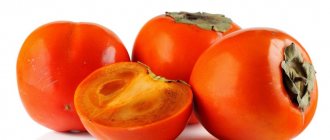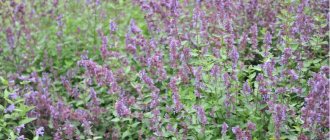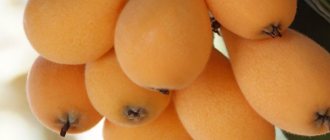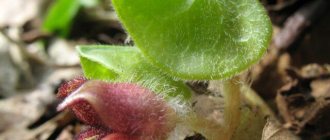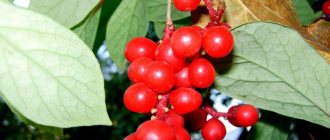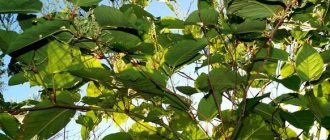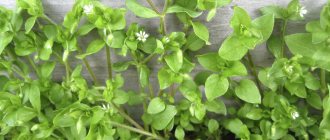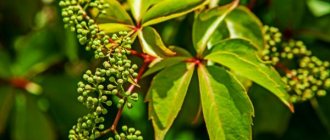From the depths of the Bronze and Stone Ages, from the countries of Central Asia, the African Mediterranean, an annual herbaceous crop of the legume family (Fabaceae) - peas - managed to pass into the modern European world. Before potatoes appeared on people's tables, they were one of the main food products, like bread. People all over the world loved it for its taste and beneficial properties.
Thanks to breeders, there are now plants of different appearance: both pod varieties and pea hybrids. We will tell you about them on our page, as well as how to grow this garden crop, its beneficial and harmful properties and uses.
White peas
The difference between white peas is the light shade of the grain. An annual crop with white inflorescences, it is widely used in medicine. White pea flour helps cope with headaches, heartburn, genitourinary diseases, and heart diseases. White peas are used in cosmetology. The main purpose, undoubtedly, is consumption in the form of soups, sauces, and side dishes. White peas grow well in sufficiently warmed and sunny loamy soils. The plant is sensitive to drought and requires increased root moisture.
Description
Peas are herbaceous plants that belong to the legume family. The plant has a bush, which, depending on the variety, reaches sizes from 40 cm to 2 meters. Some varieties can spread along the ground, while others require staking to supports. Pea fruit pods consist of two wings with peas. Peas reproduce by seeds, which are ripe peas. Peas bloom with white inflorescences.
Fruiting of the crop begins in mid-July and can last until September, depending on the variety and the time of planting in open ground. The plant most often blooms in mid-June, but may not occur evenly; inflorescences can form at intervals of up to 2 days.
Peas have good germination, if the seeds are properly processed before planting in the ground, seedlings appear evenly.
The root of the plant penetrates into the deep layers of the soil; peas tolerate diseases well and do not require complex care.
Green peas
The plant is an annual plant, the pods and grains are green, the main purpose is to be eaten. Green peas are a kind of storehouse of vitamins and minerals, as well as a concentrator of vegetable protein. Moreover, as the seed matures, the concentration of nutrients and minerals increases. An interesting fact is the content of citric acid in green peas, which exceeds its percentage even in potatoes. Raw green peas are especially useful. Green peas, like other varieties, improve digestion and saturate the body with useful microelements.
The crop is easy to care for, grows well in a personal plot in compliance with crop rotation and produces a good harvest, subject to agrotechnical measures aimed at increasing the yield of legumes.
Benefits and harms
The benefits are brought not only by the composition of vitamins and microelements, acids (citric acid), but also by pyridoxine, which helps break down and synthesize essential amino acids. Selenium blocks the entry of heavy radioactive metals into the body, exhibiting anti-carcinogenic properties. Decoctions of tops and legumes are used as a diuretic. They gently dissolve kidney stones and remove them from the body.
Vegetable pea protein is a building material for the bone and muscle system. Bread made from pea flour or porridge is very filling; together with dietary fiber, the fruits help slow down the digestive process and increase the level of hormones that reduce appetite. And this is important for vegans and vegetarians, although it cannot completely replace meat. The amino acid methionine is involved in biochemical processes. If there is a little of it in peas - 0.082/100 g, then in beef - 0.588/100 g.
black peas
An interesting and unusual bean product. The bare stem, branched long rhizomes of the plant and black seeds are a distinctive feature of black peas. The inflorescences of the culture are shaded with purple, burgundy or dark blue shades. The plant blooms at the end of May, and produces a harvest in July - August. Black-eyed peas come in several varieties: brainy and smooth. Most often found in European countries and eaten as side dishes and edible decoration for ready-made dishes.
How to grow on an industrial scale
Modern technology allows you to quickly plant large areas of peas. Almost all regions grow peas in large quantities. The product is used as canned food and for animal feed in the form of grain preparations.
Planting scheme
Fully ripened peas are used for planting. Varieties are planted depending on their ripening period. Before planting, the field is plowed and cultivated. After that, using top-seeding seeders, the planting material is planted in the ground.
Harrowing
After the plant sprouts, which will reach 10-15 cm, harrowing is carried out. For this, a special mechanized device is used to cultivate the soil between the beds. Harrowing is carried out twice during the entire ripening period.
Watering
During the entire ripening period, the crop is watered 3-4 times; irrigation is carried out using special installations that spray water in the required quantity.
Herbicides
The use of herbicides is carried out before the formation of inflorescences on plants. Herbicides can be used against pests or weeds. After the flowers form, the plant is not subjected to chemical treatment.
Mechanical cleaning
Several types of harvesting can be used:
- the use of combines that perform one-time harvesting;
- If the variety has ripened unevenly, the peas are initially mowed and folded into windrows, after which, after a few days, the plant is processed using a combine.
Most often, peas are harvested in mid-July.
Seed peas
One of the most common species, used as a forage crop and green manure. Peas are divided into several categories: shelling and sugar. The plant is grown in many countries to produce feed with a high protein content. The root system is developed in the form of a rod, the stem is thin, reaching a height of two meters. The flowers are self-pollinating, like all varieties of the family. Seeds of sowing peas can be quite large, and small due to lack of fertilizers.
How to grow at home
The cultivation technique allows you to harvest at any time of the year. Window sills and glazed balconies are used for this.
Preparation
Pea seeds are sorted and soaked in a saline solution. After the damaged specimens are rejected, it is necessary to soak the peas for a day in a growth activator. In order to speed up the process of sprouting, it is necessary to germinate the seed.
During the period when the seeds are germinating, it is necessary to prepare special containers for growing.
The best solution would be to use an oblong box with holes in the bottom. Pebbles or coarse sand must be placed at the bottom of the container. In the fall, soil is prepared, mixed with turf, and sprayed with a manganese solution to remove all possible diseases.
Selecting a location
The container is most often placed on the windowsill. Therefore, the sunny side is chosen. If necessary, additional lighting can be supplied in the form of a special lamp.
Landing
After the seeds have sprouted, small holes are made in the planting box into which the seed is placed; a distance of at least 10 cm should be maintained between the holes. After which the holes are sprinkled with soil and watered with warm water.
Care
After the shoots appear, add superphosphate, mixing it in proportions of 20 grams per 5 liters of water. After the formation of inflorescences, it is necessary to apply potassium fertilizers at the rate of 30 grams per 10 liters.
Watering is carried out every 4-5 days or as needed when the soil dries out.
Field peas
A herbaceous annual plant, sown for use as green manure, fodder and for the use of crops in honey production. The early ripening and unpretentious crop serves as an excellent help for farmers. By healing the soil, increasing its aeration and moisture capacity, field peas serve as an excellent green manure and have their place in the crop rotation of agricultural crops. It will become a “good” predecessor of winter wheat. Animals enjoy eating peas both as food and as a supplement to their daily diet.
Harvest and storage
Pea pods are ready for consumption within 1-1.5 months after flowering. The beans ripen gradually, so they should be collected every 2-3 days. The fruits of the lower tier ripen first. Depending on the variety from 1 sq. m of pea planting, you can harvest about 4 kg of crop.
Harvested green peas quickly wither and spoil even in the refrigerator, so it is not recommended to store them fresh for more than 5 days. For long-term storage, young sugar fruits can be canned or frozen.
You can dry the peas:
- First, boil it in boiling water for 2 minutes, then drain it in a sieve and rinse thoroughly with cold water.
- After this, place the fruits in the oven for an hour and dry at 50 degrees.
- Let cool.
- The second time, place the peas in the oven for the same time, preheating it to 70 degrees.
- It is recommended to store dried peas in a glass container with a tight-fitting lid.
Varieties of peas and their types
The variety of pea varieties allows the gardener to choose the most suitable variety for his needs. The most common are shelling and sugar varieties.
Shelling peas become coarse when ripe. Grain is used in natural and processed forms. Unripe varieties of shelling peas are used for preservation and eaten in their natural form.
Peas can be brainy, smooth and transitional. The marrow variety has a wrinkled seed coat and has both table and fodder purposes. Smooth – has a hard parchment shell, used in the form of side dishes and soups. The transitional type of pea cannot be classified as either brainy or smooth; seeds with a slightly wrinkled shell are used in cooked form.
Sugar peas are eaten with or without green pods. It does not have a parchment layer and when ripe the peas do not become coarse. Ideal for salads and snacks, preservation and addition to the regular diet. The sugar variety cannot boast of high yields and is not stored for long, unlike its relative, field peas.
One of the most common sugar varieties is the Konfetka variety, which, with minimal agrotechnical efforts, produces a good yield of sweet, juicy and large grains. Ideal for canning, salad dressing and fresh consumption.
The Zhegalovsky pea variety was bred by domestic breeders, a valuable variety that is valued by farmers. Inflorescences are white and cream-colored, sugar grains. Belongs to late-ripening varieties. In length it reaches impressive sizes. The seeds are large and elongated.
An inexhaustible variety of peas also appeared thanks to the merits of our breeders. It owes its name to its high yield. Sugar variety, early ripening, gray-green grains, with brain seeds. Blooms with white flowers.
Rostov variety of white peas. Domestic, early ripening small-seeded variety. It is grown for feeding cattle and for green manure. Resistant to lodging, short-term drought and shedding.
Mergert is a sugar pea variety, mid-season, brainy. The plant is of medium height - up to one and a half meters. Suitable for both preservation and consumption in its natural form. Gives a harvest in the third month after sowing.
Early green. Low-growing, early-ripening, brainy green peas. Product of domestic selection. The seeds are large and round. Used for preservation.
Winner. A low-growing pea variety that blooms with white inflorescences and is widely used for preservation. High-yielding variety, small seed size.
May. The early ripening and short stature of the plant makes the variety suitable for summer residents. The grains are round, yellowish or with a green tint.
Seed pea variety Yamal. White inflorescences, a low-growing plant type, are resistant to lodging, shedding and short-term drought. Yamal is a high-protein variety with high yield.
Sowing variety Governor. Peas are a leafless plant type, low-growing, up to a meter in height. Governor is a productive variety, with a high level of seed germination and a low degree of grain shedding.
Planting peas in open ground
Peas are an easy-to-care early ripening crop. The plant is grown without seedlings by directly sowing seeds in the ground. After planting, the first shoots appear within 5-10 days. When purchasing seeds, pay attention to the length of the pea growing season. In specialized stores you can find both early and mid-early, as well as late varieties.
Before sowing, it is necessary to carry out preparatory measures:
- select a suitable site;
- correctly determine the time of sowing;
- prepare the ground;
- treat the seeds.
Selecting a location
The herbaceous plant develops safely and bears fruit in open, sunny and well-ventilated areas. The best predecessors for peas are nightshade and pumpkin crops.
Since peas have a taproot system, you cannot choose an area with high groundwater levels. Being constantly in a waterlogged state, the root will begin to rot and the plant will die.
Climatic conditions for growing
Regions with a temperate climate are best suited for vegetable crops, but with proper selection of varieties, you can get rich harvests in cooler conditions. Young seedlings can tolerate temperature drops of up to -6 degrees without damage, and flowering plants - up to +2 degrees.
An experienced gardener in his video talks about when to plant and how to grow peas in open ground:
The optimal temperature for the formation of ovaries ranges from +12 to +15 degrees, for the growth of beans - from +17 to +21. Due to its high frost resistance, the plant is grown almost throughout Russia, including the central and northwestern regions.
Sowing time
Since pea seeds germinate at a temperature of +1 degree, the crop is sown in open ground quite early. The sowing time is chosen based on the climatic characteristics of the region where the site is located and weather conditions. In Siberia, the beginning of May is considered a favorable period for planting legumes; in the central regions, the first ten days of April. In areas with a milder climate, peas can be sown from mid-March.
Soil and lighting requirements
To sow pea seeds, choose an area with light, fertile soil. For proper plant development, the soil pH must be between 6-7. On acidic soils, peas grow slowly and often get sick. The crop also does not like soils oversaturated with readily available nitrogen, which threatens to delay flowering and ripening of the crop. The culture is photophilous, so choose sunny areas protected from drafts.
Peas' Best Neighbors
Nodule bacteria developing on pea roots saturate the soil with nitrogen, which is very useful for most garden crops. This proximity has a particularly beneficial effect on the harvest of cucumbers, carrots and turnips.
Joint planting with herbs, especially mustard, will help protect peas from the codling moth and inhibit the growth of weeds. Neighborhood with tomatoes has a beneficial effect on the growth of green mass of legumes, and also improves the quality of the harvest.
Soil preparation
The land is prepared in the fall:
- The area must be dug deeply and half a bucket of compost, 35 g of superphosphate and 25 g of potassium chloride per 1 square meter added to the soil. m.
- If the soil on the site is acidic, add wood ash along with fertilizers at the rate of 100 g per square meter. m. Then dig again and water the area with water.
Pre-sowing seed treatment
Seed preparation is an important step on the way to a rich pea harvest. First of all, you need to select defective peas. Dilute 30 g of table salt in 1 liter of water and pour the seed into the resulting saline solution. Full-bodied, high-quality seeds will settle at the bottom, while defective ones will remain on the surface.
Some gardeners recommend germinating the seeds before planting. To do this, simply wrap the peas in a damp cloth and place them in a container, covering it with a lid or wrapping it in cling film. A kind of greenhouse is placed in a warm place for a day.
You can warm up the seed immediately before planting by pouring water over the seeds at about 50 degrees for 5 minutes. After warming up, the peas should be thoroughly dried with a napkin or placed in the sun.
The process of sowing pea seeds
Having completed all the preparatory work, you can begin sowing the seeds. The technology for planting peas is as follows:
- In the prepared area, make furrows 5-8 cm deep. The distance between the rows should be at least 40-50 cm.
- Sprinkle the furrows with a mixture of wood ash, compost and fertile soil in a layer of 2-3 cm.
- Flush the grooves generously with water.
- Sow the seeds 5-6 cm apart.
- Cover the furrows with soil and tamp it down.
Growing peas, caring for crops
Pea is an annual, legume, herbaceous plant. Technologies for growing peas include both fodder varieties and sugar varieties. The sugar pea variety differs from the feed variety in its larger seed size, lower yield, and sweet juicy taste. Sugar varieties are preserved and consumed in their fresh, natural form, without heat treatment.
Forage varieties, in turn, have high yields and small seeds. Most often grown for animal feed and processing.
Despite the fact that it is difficult to call peas a capricious plant, there are some nuances of cultivation and care that can increase productivity that you need to know and apply.
Peas take pride of place in crop rotation. Requires phosphorus and potassium fertilizers, like all cultivated plants. During the period of pea germination, nitrogen fertilizers are applied to the soil. You can apply an approximate composition per hectare of crop area: ammonium sulfate at the rate of one and a half centners, five centners of superphosphate and potash fertilizers. Peas do not disdain organic fertilizers.
Peas should be sown in the spring, having prepared the soil in advance. The first half of May is considered a suitable time for planting peas; the soil will warm up sufficiently during this period. Peas have long roots, and in order for the root system to develop unhindered, the soil must be loose. Therefore, before planting peas, the sown area must be plowed. Poor soil will not produce a good harvest, this is known. To replenish the soil with nutrients, special fertilizers are applied in several stages. So, after preparing the soil, you need to decide on the choice of seeds. When planting, the variety is of no small importance; it is necessary to take into account not only the weather conditions of your region, but also personal preferences and needs.
Peas do not like cold soil, excessive moisture and shaded areas. During the growing season, the plant requires additional manipulations to protect it from pests and birds. Spraying and irrigation with preparations with protective activity against insects and diseases comes in handy. In addition, it is necessary to protect plants from weeds. You can use hand weeding or resort to herbicides.
Fertilizing and timely watering will ensure a high harvest in the future. And the right place for sowing will give one hundred percent results in the future. A site for sugar varieties should be chosen that is well-lit and windless. Apply lime for friendly shoots before planting peas; the plant will respond well to organic fertilizing before sowing grains. The placement of grains during planting is of no small importance; in heavy soil, the placement is carried out to a depth of no more than 5 centimeters. Deeper into loose soil. Peas are a climbing plant and need special support fasteners to stay suspended.
Pre-sorted seeds are soaked in warm water with the addition of boric acid; when the grains are swollen, you can begin planting. Furrows 5 cm deep are made in the soil, and pea seeds are sown. Then they dig in and irrigate the seeds so as not to accidentally wash the seeds out of the soil.
Industrialists begin sowing peas at the beginning of May, having previously cleaned the seeds with sorting machines and treated them. Sowing of peas is carried out using seeders in the usual way. With a row spacing of 15 centimeters.
A well-planted seed at a shallow depth will produce early and vigorous shoots, however, on soils with good aeration that are prone to drying out, shallow depth can cause the seed to dry out.
Pests and diseases
The insect enemies of peas are the pea moth, leaf roller, cabbage cutworm and garden cutworm. Cutworms, like cutworms, lay eggs on pea leaves. The hatched cutworm caterpillars eat the ground parts of the plants, and the leaf roller larvae, feeding on the leaves, wrap themselves in them. Codling moth butterflies lay eggs on the fruits, leaves and flowers of peas, which literally within a week become food for the larvae.
Diseases that are dangerous for peas are mosaic and powdery mildew. Mosaic is a viral disease that cannot be cured, but it can be avoided by following the agricultural practices of the species and crop rotation, as well as properly processing the seed before planting. The first signs of the disease are slow growth and curling of leaves, as well as the appearance of teeth on their edges. Later, necrotic spots appear on the leaves, and the veins become discolored.
The fungal disease powdery mildew, or spheroteca, is manifested by a whitish, loose coating that appears first at the bottom of the above-ground part, and then spreads to the entire plant. As a result, the fruits crack and die, and the affected leaves and shoots turn black and die over time.
Treatment
If you have found out why peas are sick, you need to know how to treat peas against fungus, because there is only one way to get rid of the virus: remove the diseased specimen from the area and burn it, and spill the soil in which the diseased plant grew with a strong solution of potassium permanganate and Do not grow anything in this place for at least a year.
You can fight the fungus with fungicides (Quadris, Topaz, Topsin, Fundazol, Skor, for example), but it is best to try to treat spheroteca with folk remedies that are safe for humans:
- dissolve 40 g of soda ash and 40 g of grated laundry soap in ten liters of water, mix thoroughly and spray the peas with this mixture twice at intervals of a week;
- 300 g of field thistle leaves are poured into a bucket of water, left overnight, filtered and sprayed on the peas twice with an interval of seven days;
- half a bucket of chopped garden weeds is poured with hot water to the top of the bucket and left for several days, then the infusion is filtered through cheesecloth, diluted with water in a ratio of 1:10 and sprayed on the peas.
All treatments on the leaves are carried out in the evening to avoid burning the drop-covered ground parts of the peas by the sun's rays.
Caterpillars of cutworms, leaf rollers and moths are combated by treating peas with infusions of tomato tops and garlic. To prepare tomato infusion, three kilograms of chopped tomato tops are infused in 10 liters of water for a day or two. Before processing the peas by leaves, filter the infusion. To prepare a medicinal infusion, 20 g of garlic is passed through a crusher, poured with ten liters of water and infused for 24 hours, then filtered and used. These infusions have also proven themselves in the fight against aphids.
Secrets of gardeners
Sweet pea sprouts
Growing china is not an easy task even for inexperienced gardeners. But, knowing the secrets of agricultural technology, you can turn this process into pleasure. With good care, sweet peas bloom earlier than other plants and finish blooming in late autumn.
10 secrets on how to grow sweet peas or sweet peas:
- Seed treatment (soaking, germination) should begin in mid-April or early May (see photo).
- It is best to grow seedlings in a greenhouse. At home, the plant will not have enough light, the seedlings will stretch and easily break when transplanted.
- It is better to plant beans in peat pots. When transplanting, the root system and green mass are not damaged.
- The dense seed coat prevents most plants from germinating, so for selection it is better to pre-soak the beans. If the choice of seeds is small, their shell is pierced with a thin needle in several places. To speed up the germination of seeds, they are soaked in hot water (about 80 degrees) for 1 hour. Seed preparation is relevant for plants with brown or brown inflorescences.
- Varieties with light or cream colors are planted in the ground dry, without pre-treatment or soaking.
- Immediately after the formation of 2-5 adult leaves on the seedlings, arrange a garter, support, trellis (see photo).
Otherwise, the heavily overgrown foliage will become intertwined and difficult to disentangle without damaging it. Form the direction of the stems towards the support. - The sun is an important factor in abundant flowering.
- The soil requires fertilizer every 2 weeks. Peas should be grown in neutral soils without excessive moisture.
- The growing location should be changed annually.
- Regular abundant watering provides the plant with strength to form new flowers and dense green mass.
Flowers do not like sudden changes in temperature (for example, day and night), so they can drop their buds and flowers.
Biological requirements
Peas have certain biological requirements:
- cold resistance: the culture is undemanding to heat, its seeds are able to germinate at temperatures of +1...+2 ° C, and seedlings can withstand 6–8 degree frosts;
- drought resistance: moderately demanding, tolerates spring drought before the formation of buds quite easily, but when the stage of budding and fruit formation begins, the plant becomes very sensitive to lack of moisture;
- high requirements for soil: loves moist chernozem soils rich in lime, as well as gray forest, cultivated sod-podzolic soils with an acidity level of pH 6–7; Heavy washed away, sandy, saline soil is not suitable for the crop;
- light-loving: peas require long daylight hours, they are faster than other legumes, having a growing season of 70–120 days;
Farmers and gardeners should be wary of the main crop pests:
- pea codling moth;
- pea grain;
- pea aphids and others.
Did you know? There is a version of the origin of the third part of the name of the great Roman orator, consul Marcus Tullius Cicero, from the ancient Roman word for “pea” - “cicero”. Cicero did not heed the suggestion of his friends to change such an “unsightly” name to advance in his political career, and he was right: he glorified him for thousands of years.
Peas may be affected by the following dangerous diseases that the gardener will have to fight:
- ascochyta;
- powdery mildew;
- fusarium;
- rust.
It is better to take care of their prevention in advance.
Features of cultivation
Although special conditions for growing peas are not required, experienced gardeners have long understood that a good harvest of a legume plant can be ensured by choosing a site with good predecessor plants, properly fertilizing it and processing it using special technology.
How to choose a place on the site?
Thanks to the unpretentiousness of peas, almost any garden or summer cottage is suitable for successfully growing the plant.
The only contraindication to growing legumes is excessive acidity of the soil, because under such conditions the seeds simply will not germinate, and the high salt content can negatively affect the harvest. But both problems can be solved by preliminary liming.
To maintain the correct planting technology, great attention is paid to observing crop rotation.
The most successful places for growing peas are considered to be those areas where they were previously grown:
- cabbage;
- potato;
- pumpkin;
- cucumbers;
- tomatoes;
- perennial cereals or forage grasses.
Requirements and soil preparation
You cannot plant peas where their legume relatives were previously grown. Moreover, such an interval represents 4 seasons of rest for the land from such crops. Preference for planting the plant should be given to fertile, loose soil of loamy or sandy loam type.
But, if desired, the land can be pre-prepared by cultivating and fertilizing the soil. On properly prepared land, peas will produce an even larger and healthier harvest.
For processing, it is better to choose the time of autumn digging. The ground can be sprinkled with superphosphate first. By the time of sowing, it will be maximally absorbed in the soil and will turn into compounds useful for planting (this will help the root system of the peas to be easily absorbed).
In the spring, the preparation procedure will also be effective, but superphosphate will no longer be suitable for fertilizer.
Spring replenishment of the soil is carried out using:
- humus;
- rotted manure;
- mullein;
- infusions of bird droppings.
It is not advisable to use fresh manure in spring due to its high urea content. A high nitrogen content in it will negatively affect the quality of the crop; the peas will be wrinkled, densely leafy and with a minimum number of flowers and ovaries.
Experienced gardeners often resort to spring treatment of beds with mineral preparations.
Preparations for spring replenishment with microelements should contain copper, boron and molybdenum. This solution is also good for soaking pea seeds before planting.
Before placing peas in beds, you should take into account the peculiarities of the plant’s root system; the roots extend a meter deep), and plant the seeds as deep as possible (or make high beds depending on soil moisture).
Important: provide future peas with free access to the sun, as legumes prefer light.
It would be good to plant the plant next to a path or passage between the beds, this will simplify the task of harvesting.
If you want to plant several crops in one bed, you should take into account that peas will not coexist with some vegetables.
You cannot plant peas next to plants such as:
- onion;
- cabbage;
- tomatoes;
- potato;
- other members of the legume family.
Let's celebrate! If the area is surrounded by a fence that receives good light, it will be a good place to tie peas.
Growing sweet peas from seeds
Sowing
Sweet pea seeds are sown for seedlings in mid-March. The seeds germinate rather poorly, so they need to be prepared before sowing. To do this, they are immersed in water for 10–12 hours, or they can be kept for some time in a solution of Bud (per 1 liter of water from 1 to 2 grams), and its temperature should be 50 degrees. After this, they are placed in moistened sand, sawdust or gauze for germination, where they must remain at a temperature of 20 to 24 degrees for 2-4 days. As soon as the seeds sprout. they must be sown immediately. To sow seedlings, it is recommended to use ready-made soil mixture Rose or Saintpaulia, or you can also use a soil mixture consisting of peat, humus and turf soil (2:2:1). Whatever soil mixture you choose, it must be disinfected with a strong solution of potassium manganese. Pots or cups are used for sowing seeds. Seeds must be sown in moistened soil mixture. 2 or 3 seeds are placed in one container; they are buried into the soil mixture by 20–30 mm, no more. If sowing is done in a common box, then a distance of 80 mm should be maintained between the seeds. After the crops are watered, the containers must be covered with film on top, then they are placed on a well-lit windowsill in a warm place (from 18 to 22 degrees).
Growing seedlings
After the seedlings begin to appear en masse, as a rule, this happens 7–15 days after sowing, it is necessary to remove the cover from the containers, and also move them to a cooler place (from 15 to 16 degrees), thanks to which nodules will form on the roots, which fix nitrogen. The soil should always be slightly moist. It is recommended to place the seedlings on a southern windowsill; if this is not possible, then the plants should be provided with artificial lighting for 2 to 3 hours every day. Experienced gardeners recommend taking a fluorescent lamp or a phytolamp for this, which should be fixed at a height of 0.25 m above the seedlings. You can turn on such a lamp, for example, from 7 to 10 or from 17 to 20. To stimulate the growth of lateral shoots during the formation of the second or third true leaf plate, the seedlings should be pinched. Then the seedlings need to be fed, for this they use Kemira solution (2 grams per 1 liter of water).
